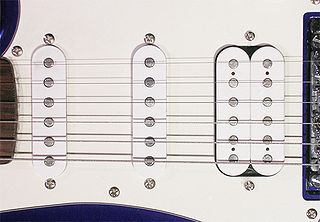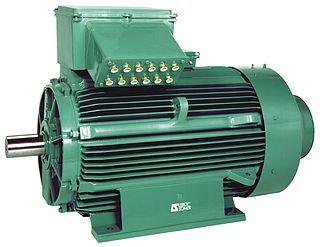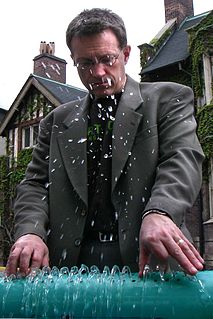Electronic music is music that employs electronic musical instruments, digital instruments and circuitry-based music technology. A distinction can be made between sound produced using electromechanical means and that produced using electronics only. Electromechanical instruments have mechanical elements, such as strings, hammers and electric elements, such as magnetic pickups, power amplifiers and loudspeakers. Examples of electromechanical sound producing devices include the telharmonium, Hammond organ and the electric guitar, which are typically made loud enough for performers and audiences to hear with an instrument amplifier and speaker cabinet. Pure electronic instruments do not have vibrating strings, hammers or other sound-producing mechanisms. Devices such as the theremin, synthesizer and computer can produce electronic sounds.

The phonograph is a device for the mechanical recording and reproduction of sound. In its later forms, it is also called a gramophone or, since the 1940s, a record player. The sound vibration waveforms are recorded as corresponding physical deviations of a spiral groove engraved, etched, incised, or impressed into the surface of a rotating cylinder or disc, called a "record". To recreate the sound, the surface is similarly rotated while a playback stylus traces the groove and is therefore vibrated by it, very faintly reproducing the recorded sound. In early acoustic phonographs, the stylus vibrated a diaphragm which produced sound waves which were coupled to the open air through a flaring horn, or directly to the listener's ears through stethoscope-type earphones.

A wire is a single, usually cylindrical, flexible strand or rod of metal. Wires are used to bear mechanical loads or electricity and telecommunications signals. Wire is commonly formed by drawing the metal through a hole in a die or draw plate. Wire gauges come in various standard sizes, as expressed in terms of a gauge number. The term 'wire' is also used more loosely to refer to a bundle of such strands, as in "multistranded wire", which is more correctly termed a wire rope in mechanics, or a cable in electricity.
Noise music is a category of music that is characterised by the expressive use of noise within a musical context. This type of music tends to challenge the distinction that is made in conventional musical practices between musical and non-musical sound. Noise music includes a wide range of musical styles and sound-based creative practices that feature noise as a primary aspect.

A seismometer is an instrument that responds to ground motions, such as caused by earthquakes, volcanic eruptions, and explosions. Seismometers are usually combined with a timing device and a recording device to form a seismograph. The output of such a device—formerly recorded on paper or film, now recorded and processed digitally—is a seismogram. Such data is used to locate and characterize earthquakes, and to study the Earth's internal structure.

A humbucking pickup, humbucker, or double coil, is a type of electric guitar pickup that uses two coils to "buck the hum" picked up by coil pickups caused by electromagnetic interference, particularly mains hum. Most pickups use magnets to produce a magnetic field around the strings, and induce an electrical current in the surrounding coils as the strings vibrate. Humbuckers work by pairing a coil that has the north poles of its magnets oriented "up" with another coil right next to it with the south pole of its magnets oriented up. By connecting the coils together out of phase, the interference is significantly reduced via phase cancellation: the string signals from both coils add up instead of canceling, because the magnets are placed in opposite polarity. The coils can be connected in series or in parallel in order to achieve this hum-cancellation effect, although it's much more common for the coils of a humbucker pickup to be connected in series. In addition to electric guitar pickups, humbucking coils are sometimes used in dynamic microphones to cancel electromagnetic hum.

A pickup is a transducer that captures or senses mechanical vibrations produced by musical instruments, particularly stringed instruments such as the electric guitar, and converts these to an electrical signal that is amplified using an instrument amplifier to produce musical sounds through a loudspeaker in a speaker enclosure. The signal from a pickup can also be recorded directly.

Sound recording and reproduction is an electrical, mechanical, electronic, or digital inscription and re-creation of sound waves, such as spoken voice, singing, instrumental music, or sound effects. The two main classes of sound recording technology are analog recording and digital recording.

An AC motor is an electric motor driven by an alternating current (AC). The AC motor commonly consists of two basic parts, an outside stator having coils supplied with alternating current to produce a rotating magnetic field, and an inside rotor attached to the output shaft producing a second rotating magnetic field. The rotor magnetic field may be produced by permanent magnets, reluctance saliency, or DC or AC electrical windings.

An experimental musical instrument is a musical instrument that modifies or extends an existing instrument or class of instruments, or defines or creates a new class of instrument. Some are created through simple modifications, such as cracked drum cymbals or metal objects inserted between piano strings in a prepared piano. Some experimental instruments are created from household items like a homemade mute for brass instruments such as bathtub plugs. Other experimental instruments are created from electronic spare parts, or by mixing acoustic instruments with electric components.
Credo in Us is a musical composition by the American experimental music composer, writer and visual artist John Cage. It was written in July 1942 and revised in October of that year. In the wake of Pearl Harbor, this piece avoided the populist tendencies of fellow American composers at the time, while the piece's title is thought to be a call to collective unity.
American avant-garde composer John Cage (1912–1992) started composing pieces for solo prepared piano around 1938–40. The majority of early works for this instrument were created to accompany dances by Cage's various collaborators, most frequently Merce Cunningham. In response to frequent criticisms of prepared piano, Cage cited numerous predecessors. In the liner notes for the very first recording of his most highly acclaimed work for prepared piano, Sonatas and Interludes, Cage wrote: "Composing for the prepared piano is not a criticism of the instrument. I'm only being practical." This article presents a complete list of Cage's works for prepared piano, with comments on each composition. All of Cage's indeterminate works for unspecified forces can also be performed on or with Prepared Piano.
Construction is the title of several pieces by American composer John Cage, all scored for unorthodox percussion instruments. The pieces were composed in 1939–42 while Cage was working at the Cornish School of the Arts in Seattle, Washington and touring the West Coast with a percussion ensemble he and Lou Harrison had founded.The series comprises three Constructions. A piece titled Fourth Construction, mentioned in several sources, is apparently either an unfinished work from 1942 or, more likely, an early title of the work we now know as Imaginary Landscape No. 2 .

Imaginary Landscape No. 1 is a composition for records of constant and variable frequency, large chinese cymbal and string piano by American composer John Cage and the first in the series of Imaginary Landscapes. It was composed in 1939.
Live electronic music is a form of music that can include traditional electronic sound-generating devices, modified electric musical instruments, hacked sound generating technologies, and computers. Initially the practice developed in reaction to sound-based composition for fixed media such as musique concrète, electronic music and early computer music. Musical improvisation often plays a large role in the performance of this music. The timbres of various sounds may be transformed extensively using devices such as amplifiers, filters, ring modulators and other forms of circuitry. Real-time generation and manipulation of audio using live coding is now commonplace.

Guitar wiring refers to the electrical components, and interconnections thereof, inside an electric guitar. It most commonly consists of pickups, potentiometers to adjust volume and tone, a switch to select between different pickups, and the output socket. There may be additional controls for specific functions; the most common of these are described below.

Imaginary Landscape No. 3 is a composition for six percussionists by American composer John Cage and the third in the series of Imaginary Landscapes. It is the last Imaginary Landscape to feature percussion instruments and, therefore, the last one to be considered a chamber piece. It was composed in 1942.

Imaginary Landscape No. 2 is a composition for five percussionists by American composer John Cage and the second in the series of Imaginary Landscapes. It was also the first march in the set, the second being Imaginary Landscape No. 4 . It was composed in 1942.

Imaginary Landscape No. 4 is a composition for 24 performers on 12 radios and conductor by American composer John Cage and the fourth in the series of Imaginary Landscapes. It is the first installment not to include any percussion instrument at all and Cage's first composition to be based fully on chance operations. It is also the second march in the set of Imaginary Landscapes, after Imaginary Landscape No. 2 . It was composed in 1951.